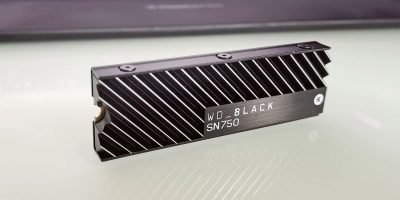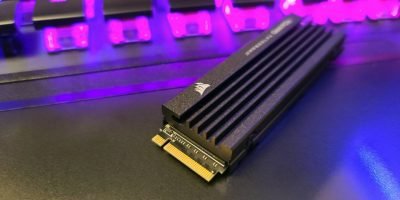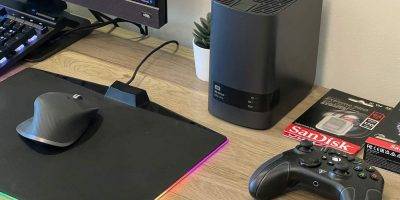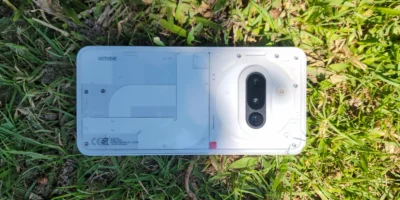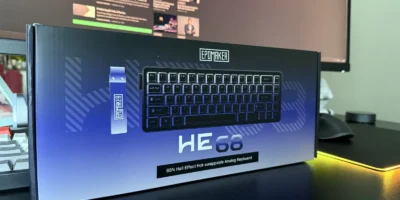The Silicon Power P34A60 is an affordable M.2 2280 NVMe PCIe SSD aimed at gamers and creative professionals. It comes in a M.2 2280 form factor with PCIe 3.0 x4 interface, based on Intel 64-layer 3D NAND TLC chip with E2E and ECC data protection technologies.
The P34A60 offers sequential read speeds that can reach upto 2,200 MBps and sequential write speeds of 1,600 Mbps on this model and is available in capacities of 128GB, 256GB, 512GB, 1TB, 2TB. The SSD is rated for an MTBF (Mean time between failures) of 2,000,000 hours, with operating temperatures of 0 to 70 degrees Celsius and is backed by a 5-year warranty or 1200TBW.
Other features include NVMe 1.3, Host Memory Buffer, LDPC, SLC Cache and End-To-End (E2E) data protection.
| Form Factor | M.2 2280 |
| Interface | NVMe PCIe Gen 3.0 x 4 Lanes |
| NAND | Intel 3D TLC (64 layers) |
| Capacities | 128GB, 256GB, 512GB, 1TB, 2TB |
| Sequential Read/Write | up to 2,200 / 1,600 MB/s |
| Total Bytes Written (TBW) | 250GB – 150TBW 500GB – 300TBW 1TB – 600TBW 2TB – 1200TBW |
| Operating Temperature | 0°C~70°C |
| Dimensions | 80mm x 22mm x 3.5mm |
| Endurance | 128GB: 75 TBW 250GB: 150 TBW 500GB: 300 TBW 1TB: 600 TBW 2TB: 1200 TBW |
| MTBF | 2,000,000 hours |
| Warranty Period | 5 Years |
Packaging & Design
The packaging comes in a simple cardboard box with a see-through plastic blister. The drive comes in the M.2 2280 form factor, 80mm x 22mm x 3.5mm in size and weighs 10 grams.
The Silicon Power P34A60 comes in the M.2 format and connects over a PCI-Express 3.0 x4 interface. This format is approximately 3 times faster performance than SATA SSDs which are already very fast. Combined with the NVMe interface (Non-Volatile Memory Express), the P34A60 is capable of both increasing read and transfer rates, as well as faster access times.
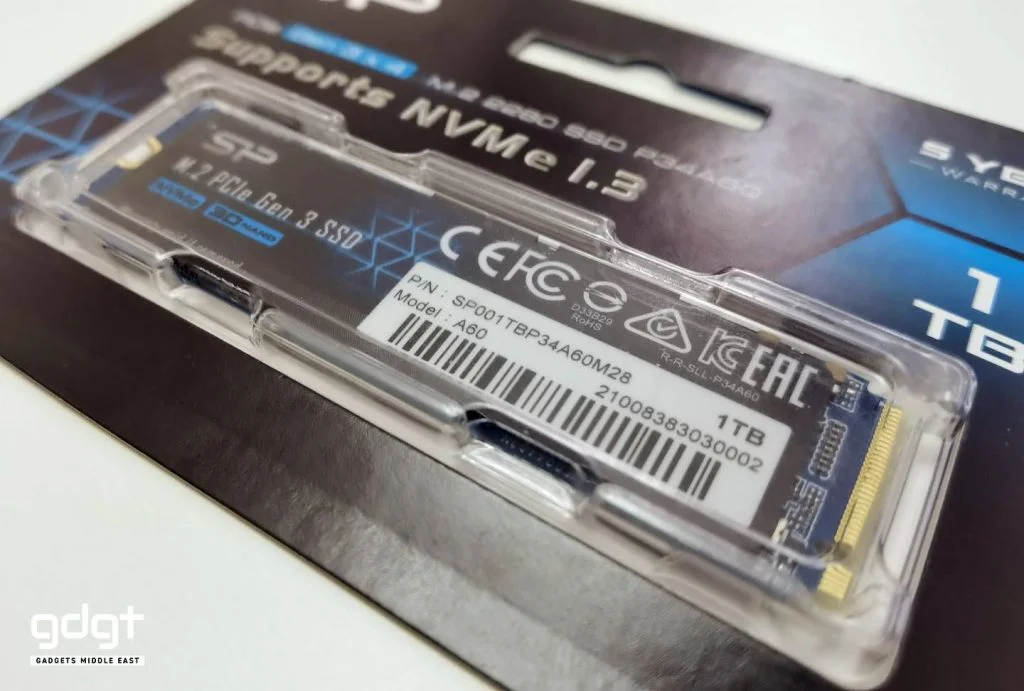
On our review model is the 1TB version, the memory chips and controller are on the front side of the black PCB. The front is completely covered with a label which includes the model information. The components are on behind the label on the blue PCB. There are no components installed on the back.
The P34A60 features LPDC’s E2E and ECC type data protection technologies for error detection and correction, but does not offer support for AES encryption at the hardware level.
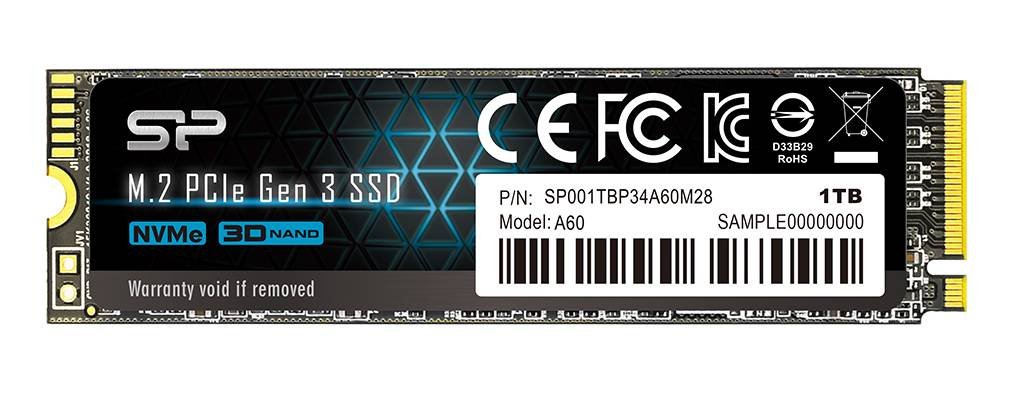
Performance
Test Bench
- BeQuiet! Pure Base 500DX Case
- ASUS B550-F Wifi Motherboard
- ASUS Ryzen 5 3600
- BeQuiet Shadow Rock 3
- MSI 5700 XT Gaming X
- Cougar GX-F AURUM 650W PSU
- Corsair Vengance 32GB DDR4 RAM
- Silicon Power P34A60 SSD
The P34A60 does not include integrated DRAM cache memory, but works through Host Memory Buffer or HBM. HBM basically allocates RAM memory as a data cache for the SSD which improves efficiency. Although this alternative is slower than having integrated DRAM memory, it does help cut costs and offer a fairly competitive performance.
After formatting the drive, we are left with 953 GB of free space. During tests, the Silicon Power P34A60 performed very well in everyday applications. Transferring and reading files, booting the system and loading games is quick with this SSD.
When copying files during everyday use, the speeds are in the range of 1600-1900 MB/s, depending on the file size and reached about 1,400MB/s in reading files. The average bandwidth during PCMark 8 tests were 490 MB/s, a very good result considering Silicon Power positions this as an entry-level SSD.
In our CrystalDiskMark benchmark, the P34A60 nearly matches the speed advertised by Silicon Power of up to 2,102 MB/s sequential read and 1,682 MB/s for sequential write and performs well.
| CrystalDiskmark Read | 2,102 MB/s |
| CrystalDiskmark Write | 1,682 MB/s |
| ATTODisk Read | 2,024 MB/s |
| ATTODisk Write | 1,694 MB/s |
| PCMark 8 Storage Test | 490.54 MB/s |
Software
Silicon Power’s SSD storage software is known as SP Toolbox. The software is fairly basic and offers very few settings except for the essentials.
Verdict
Silicon Power P34A60 is an entry-level SSD with great performance for its segment. Price-wise it competes in with SATA alternatives while you get a good performing M.2 NVMe SSD. The P34A60 comes in capacities from 128GB to 2TB making it accessible to users with different systems, from workstations to desktops to laptops and even high-end gaming PCs.



